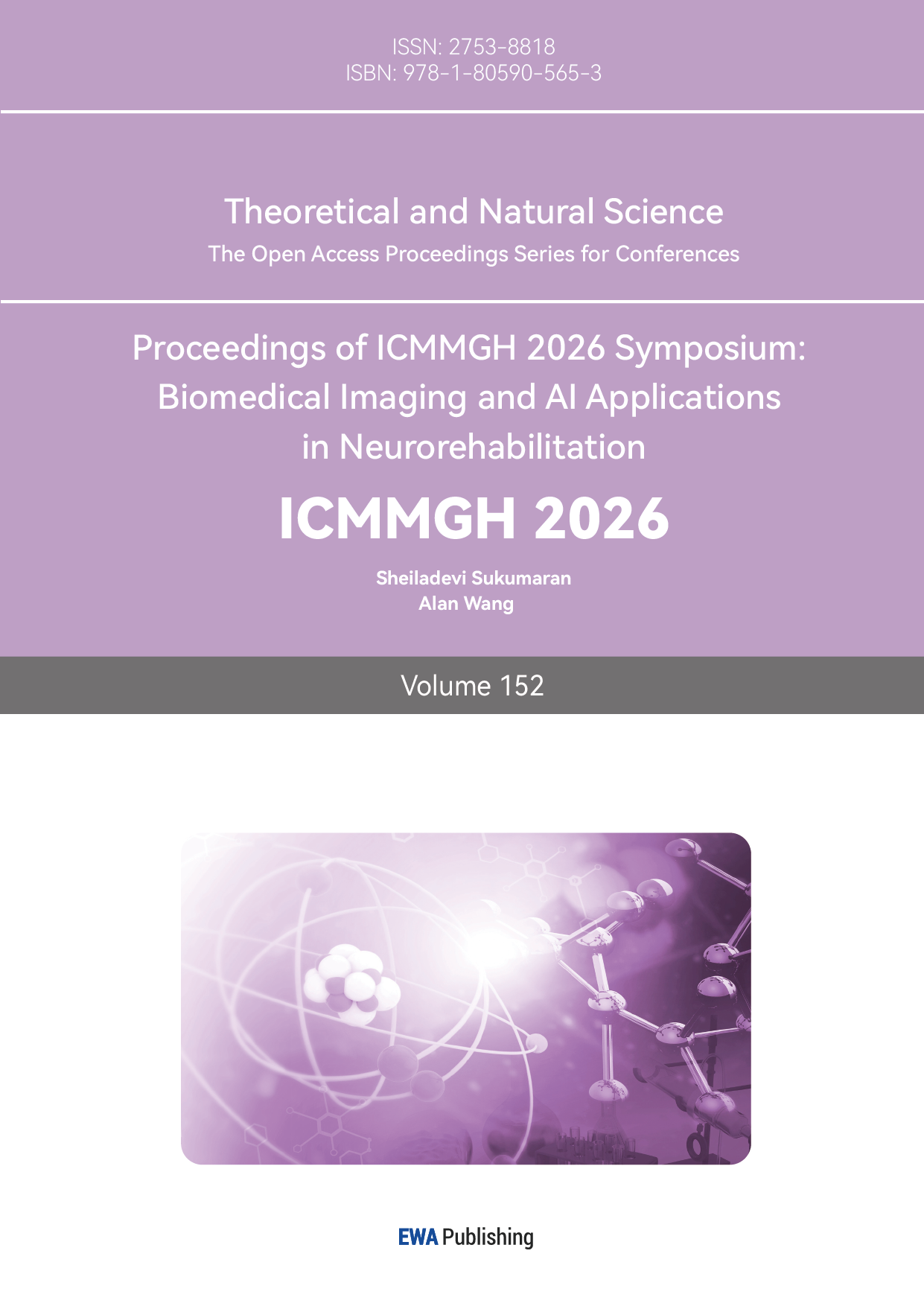References
[1]. Alowais, S. A., Alghamdi, S. S., Alsuhebany, N., Alqahtani, T., Alshaya, A. I., Almohareb, S. N., Aldairem, A., Alrashed, M., Bin Saleh, K., Badreldin, H. A., Al Yami, M. S., Al Harbi, S., & Albekairy, A. M. (2023). Revolutionizing healthcare: The role of artificial intelligence in clinical practice. BMC Medical Education, 23(1), 689. https: //doi.org/10.1186/s12909-023-04698-z
[2]. Tan Yip Ming, C., Rojas-Carabali, W., Cifuentes-González, C., Agrawal, R., Thorne, J. E., Tugal-Tutkun, I., Nguyen, Q. D., Gupta, V., de-la-Torre, A., & Agrawal, R. (2024). The Potential Role of Large Language Models in Uveitis Care: Perspectives After ChatGPT and Bard Launch. Ocular Immunology and Inflammation, 32(7), 1435–1439. https: //doi.org/10.1080/09273948.2023.2242462
[3]. Khosravi, M., Zare, Z., Mojtabaeian, S. M., & Izadi, R. (2024). Artificial Intelligence and Decision-Making in Healthcare: A Thematic Analysis of a Systematic Review of Reviews. Health Services Research and Managerial Epidemiology, 11, 23333928241234863. https: //doi.org/10.1177/23333928241234863
[4]. San José Estépar, R. (2022). Artificial intelligence in functional imaging of the lung. The British Journal of Radiology, 95(1132), 20210527. https: //doi.org/10.1259/bjr.20210527
[5]. Li, I., Pan, J., Goldwasser, J., Verma, N., Wong, W. P., Nuzumlalı, M. Y., Rosand, B., Li, Y., Zhang, M., Chang, D., Taylor, R. A., Krumholz, H. M., & Radev, D. (2022). Neural Natural Language Processing for unstructured data in electronic health records: A review. Computer Science Review, 46, 100511. https: //doi.org/10.1016/j.cosrev.2022.100511
[6]. Kim, H.-E., Kim, H. H., Han, B.-K., Kim, K. H., Han, K., Nam, H., Lee, E. H., & Kim, E.-K. (2020). Changes in cancer detection and false-positive recall in mammography using artificial intelligence: A retrospective, multireader study. The Lancet. Digital Health, 2(3), e138–e148. https: //doi.org/10.1016/S2589-7500(20)30003-0
[7]. How AI can help health departments monitor infectious disease outbreaks. (2025, July 1). Healthbeat. https: //www.healthbeat.org/2025/07/01/artificial-intelligence-infectious-disease-outbreaks/
[8]. Hirani, R., Noruzi, K., Khuram, H., Hussaini, A. S., Aifuwa, E. I., Ely, K. E., Lewis, J. M., Gabr, A. E., Smiley, A., Tiwari, R. K., & Etienne, M. (2024). Artificial Intelligence and Healthcare: A Journey through History, Present Innovations, and Future Possibilities. Life, 14(5), 557. https: //doi.org/10.3390/life14050557
[9]. Ding, X., Shang, B., Xie, C., Xin, J., & Yu, F. (2025). Artificial intelligence in the COVID-19 pandemic: Balancing benefits and ethical challenges in China’s response. Humanities and Social Sciences Communications, 12(1), 245. https: //doi.org/10.1057/s41599-025-04564-x
[10]. Explained: Neural networks. (2017, April 14). MIT News | Massachusetts Institute of Technology. https: //news.mit.edu/2017/explained-neural-networks-deep-learning-0414
[11]. National Institutes of Health. (2024, July 23). NIH findings shed light on risks and benefits of integrating AI into medical decision making https: //www.nih.gov/news-events/news-releases/nih-findings-shed-light-risks-benefits-integrating-ai-into-medical-decision-making
[12]. Tilala, M. H., Chenchala, P. K., Choppadandi, A., Kaur, J., Naguri, S., Saoji, R., & Devaguptapu, B. (2024). Ethical Considerations in the Use of Artificial Intelligence and Machine Learning in Health Care: A Comprehensive Review. Cureus, 16(6), e62443. https: //doi.org/10.7759/cureus.62443
[13]. Kaur, S., Singla, J., Nkenyereye, L., Jha, S., Prashar, D., Joshi, G. P., El-Sappagh, S., Islam, Md. S., & Islam, S. M. R. (2020). Medical Diagnostic Systems Using Artificial Intelligence (AI) Algorithms: Principles and Perspectives. IEEE Access, 8, 228049–228069. https: //doi.org/10.1109/ACCESS.2020.3042273
[14]. Maleki Varnosfaderani, S., & Forouzanfar, M. (2024). The Role of AI in Hospitals and Clinics: Transforming Healthcare in the 21st Century. Bioengineering, 11(4), 337. https: //doi.org/10.3390/bioengineering11040337
[15]. Martínez-Sellés, M., & Marina-Breysse, M. (2023). Current and Future Use of Artificial Intelligence in Electrocardiography. Journal of Cardiovascular Development and Disease, 10(4), 175. https: //doi.org/10.3390/jcdd10040175
[16]. Rafało, M. (2022). Cross validation methods: Analysis based on diagnostics of thyroid cancer metastasis. ICT Express, 8(2), 183–188. https: //doi.org/10.1016/j.icte.2021.05.001
[17]. Seyyed-Kalantari, L., Zhang, H., McDermott, M. B. A., Chen, I. Y., & Ghassemi, M. (2021). Underdiagnosis bias of artificial intelligence algorithms applied to chest radiographs in under-served patient populations. Nature Medicine, 27(12), 2176–2182. https: //doi.org/10.1038/s41591-021-01595-0
[18]. Vazquez-Zapien, G. J., Mata-Miranda, M. M., Garibay-Gonzalez, F., & Sanchez-Brito, M. (2022). Artificial intelligence model validation before its application in clinical diagnosis assistance. World Journal of Gastroenterology, 28(5), 602–604. https: //doi.org/10.3748/wjg.v28.i5.602



